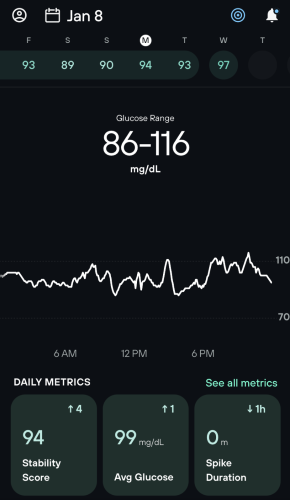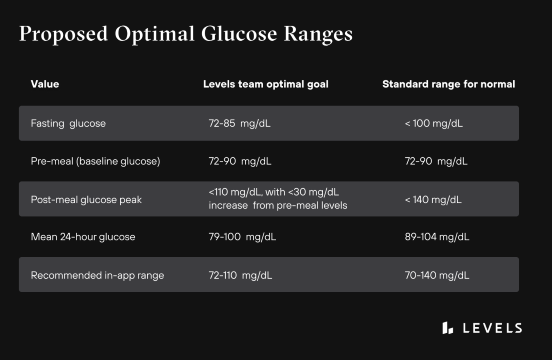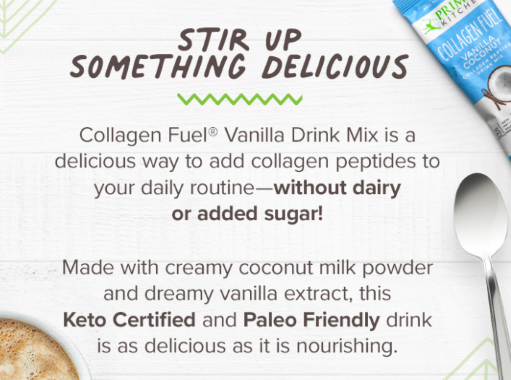Issue #289: 10 Things I Learned Wearing a CGM
Good morning. It’s Thursday, January 11th.
In today’s email:
Learn: 10 Things I Learned from CGM
Try: Savor Your Food
Eat: Apples
In the News: Try New Music
Stat of the Day
My average blood glucose (mg/dL) after a month of using a CGM.
Learn
Top 10 Things I Learned from a CGM
Our blood glucose levels change constantly. Across a 24-hr period, my levels typically ranged from 85 mg/dL to 115 mg/DL.
My scores
The real key is to identify and prevent the foods that will dramatically spike your blood glucose.
These spikes force the pancreas to produce more insulin to get the glucose into our cells (for energy now) or liver (for energy later).
It’s totally ok when this happens once in a while - but doing this all the time will overwork the pancreas to constantly produce insulin and our cells won’t be able to take in all this glucose anyway. So it goes to our liver and fat for storage. Then we gain weight, become insulin resistant, and start having real metabolic problems.
Here’s what Levels Health provides as guidelines for optimal blood glucose levels:
As for me - here’s what I found has the biggest effect on my blood glucose:
“What” Food Matters
1. Rice & Chips - Tortilla chips are my kryptonite - I love ‘em. But they spiked my glucose higher than anything else I ate (nachos on NYE). Also, I don’t eat much gluten and with Green Chef a lot of dinners come with white rice - which also spikes my glucose.
2. Don’t Eat Carbs Solo - Here’s what’s crazy about what I just put in #1. Chips with guac didn’t spike my glucose. The fiber and fat from the avocado really makes a huge difference in keeping my glucose stable (nice!). Same thing with the rice - if it’s a small percentage of the dinner with say broccoli (fiber) and a protein, then the glucose stayed in line. Guess the Glucose Goddess is right.
3. Green Bananas - I was pumped that my AM breakfast smoothie typically didn’t spike my glucose. But…there was a measurable difference if the bananas are slightly underripe vs if they had brown spots. Crazy - but the sugar content really does change as bananas ripen. I know green bananas are tough to eat, but the fiber and low sugar content is worth it (hide it in the smoothie).
4. Careful What You Drink - I mostly drink water and green tea. But I’d been tired lately and started drinking Celsius after my workouts. It doesn’t have sugar (only stevia and sucralose), but it did spike my glucose. I want to learn why - but in the meantime I’m sticking with green tea.
“How Much” Food Matters
5. Dark Chocolate - My go-to dessert is a few squares of dark chocolate from the freezer (70%+ cacao). This didn’t spike my glucose - unless, it was one of the nights when I decided to go for half the bar, then I did see a noticeable spike.
“How Fast” Matters
6. Savor Dinner - sometimes I’m really hungry by dinner time and other times I’m rushing to eat with the kids. Either way, when I eat too quickly it creates a bigger glucose spike. This makes sense since it overloads your body with glucose in a short timeframe.
7. Chew Your Smoothie - same thing with my smoothie. After a run/workout I’m sometimes famished and down my smoothie in a few gulps - this also increased my blood glucose. Your digestive system starts in your mouth - I don’t go so far as to chew my smoothie (although that’s what many experts advise), but I’m trying to take at least 10-15 min to finish it.
Working Out
8. Exercise Increases Blood Glucose - though not typically more than 110 or 112 mg/dL. But this is normal and don’t worry about it unless you see a much more massive spike.
9. Zone 5 - on days that I do a 45-min bootcamp-style HIIT class I noticed that my glucose was pretty stable the rest of the day, regardless of what I ate. It was also better on days after a run or lifting weights, but not to the degree of a Zone workout.
10. Get Some Zzz’s - definitely bigger swings on days after bad sleep. Will talk about this more on Saturday - but don’t forget to rest and recover to stabilize your blood sugar.
Well - that’s what I learned. If you decide to give a CGM a try, would love to hear what you find out! (Send to team@thrive25.com)
Try
Savor Your Food
Easy wins today…
Add fat, fiber, protein to empty carbs - like guac on chips, nut butter on apples (see below) or meat, broccoli and butter on pasta.
Slow down - don’t constantly eat on the go. Take the time to enjoy your food - like really taste it and figure out all the flavors you’re getting. Maybe focus more on the conversation at dinner than rushing to clean your plate.
Thrive25 Partner Spotlight
Mark Sisson calls collagen the fourth macronutrient. It’s the most abundant protein in your body and its fiber-like structure is used to make connective tissue - think skin, bone, muscles, etc. - kind of important. Unfortunately, absorption from food may not be as efficient as from supplements. So try Primal Kitchen’s Collagen Fuel - no artificial sweeteners, dairy, whey or soy, and 100% paleo and keto friendly.
Primal Kitchen redefines flavor with a healthy twist, offering an array of irresistible options. Enjoy a 10% discount off your entire order at Primal Kitchen. Don’t miss out - click HERE to claim your discount today!
Eat
Apples
Wait - aren’t apples high in sugar? Yep - they do have 19g, but the high fiber in apples sends more sugar to your gut bacteria and less to your liver, which is why apples are actually a low glycemic food. The sugar is even further neutralized when you add some nut butter - my go-to afternoon snack.
Plus, they fill you up - if you eat an apple 30-45 min before lunch or dinner you won’t overeat during that next meal.
More importantly - apples are huge when it comes to micronutrients and those “polyphenols” - those things in plants that typically give them color and promote good health for us. Specifically apples have quercetin (antioxidant), catechin (protects against cancer), and chlorogenic acid (improves glucose tolerance). Make sure to eat the skin of the apple to get all the good quercetin.
According to Dr. William Li - eating 1-2 apples/day is associated (not causal) with lower bladder cancer (10 percent), colon cancer (20 percent), and lung cancer (18 percent).
Top Apple Eating Tips
Serving size: one medium-sized apple (size of tennis ball)
When to eat: any time. Apples are a great snack, especially before meals to keep from overeating
Eat apples with vitamin C-rich foods (citrus fruits or bell peppers) to enhance the absorption of the apple’s nutrients and put some fat on the apples (nut butter, cheese) to get more fat-soluble nutrients.
Always go organic - conventionally grown apples have lots of pesticide residue and you want to eat the skin.
Don’t drink your apples - there’s 53g of sugar in apple juice, with none of the fiber (0g). Stick with the real thing.
“An apple a day…” (You get it)
In the News
The Male Libido: …is always active. But what exactly drives it and the reward experience? Stanford researchers believe they found a newly identified brain circuit in mice believed to be the same for humans. (Source)
Soundtrack of Your Life: Music is a workout for the brain because it’s “structural, mathematical and architectural.” Just like a workout, diminishing returns occur when you do the same thing over and over - listen to different types of music to enable neural plasticity. (Source)
Ikigai: Revisiting ikigai (Issue #212, #218) is great as resolutions get hard to maintain. Diet and exercise are awesome, but ikigai - clarifying your reason for being, drives your mindset which cascades to everything you do. (Forbes)
Thanks for joining us today!
Check out the latest workout videos on our YouTube channel
Got feedback, recommendations or stories to share? Tell us what’s on your mind here
Want this direct to your inbox? Sign up here
Why Thrive25
We’re 40-something dads that felt our bodies and minds start to slow down and we’re not ready for that. We found too much information on every subject. So we started Thrive25 to transform what we’ve learned into something useful for the rest of us to spend just 3-5 min a day to optimize our health & longevity.
This newsletter is for you and we truly value your feedback. Never hesitate to reach out to us at team@thrive25.com.
To health!
Sign up for free:
The information in this newsletter is for informational purposes only and may not be appropriate or applicable based on your individual circumstances. Thrive25 Labs, Inc. does not provide medical, professional, or licensed advice. Please connect with your healthcare professional for medical advice specific to your health needs.









